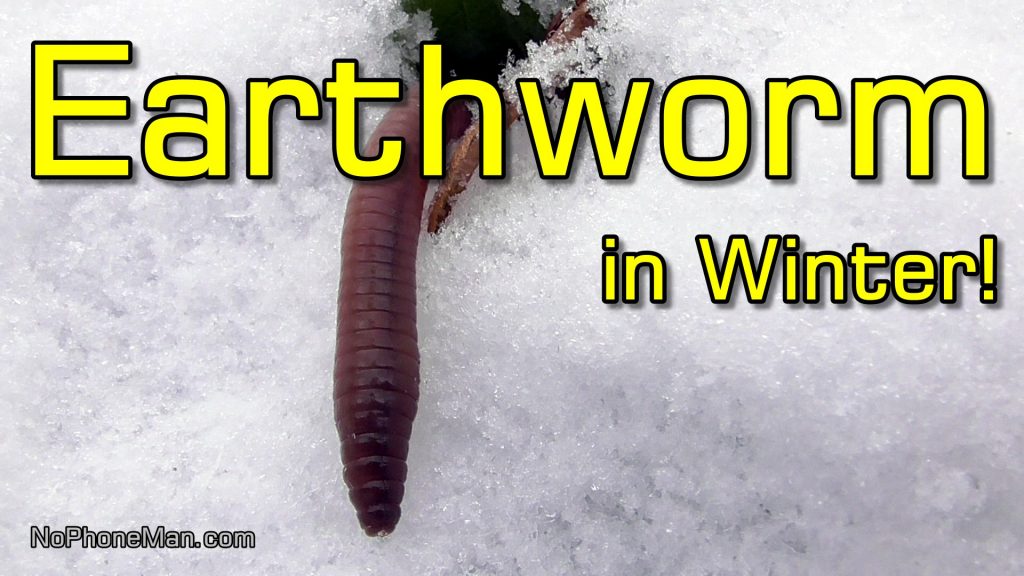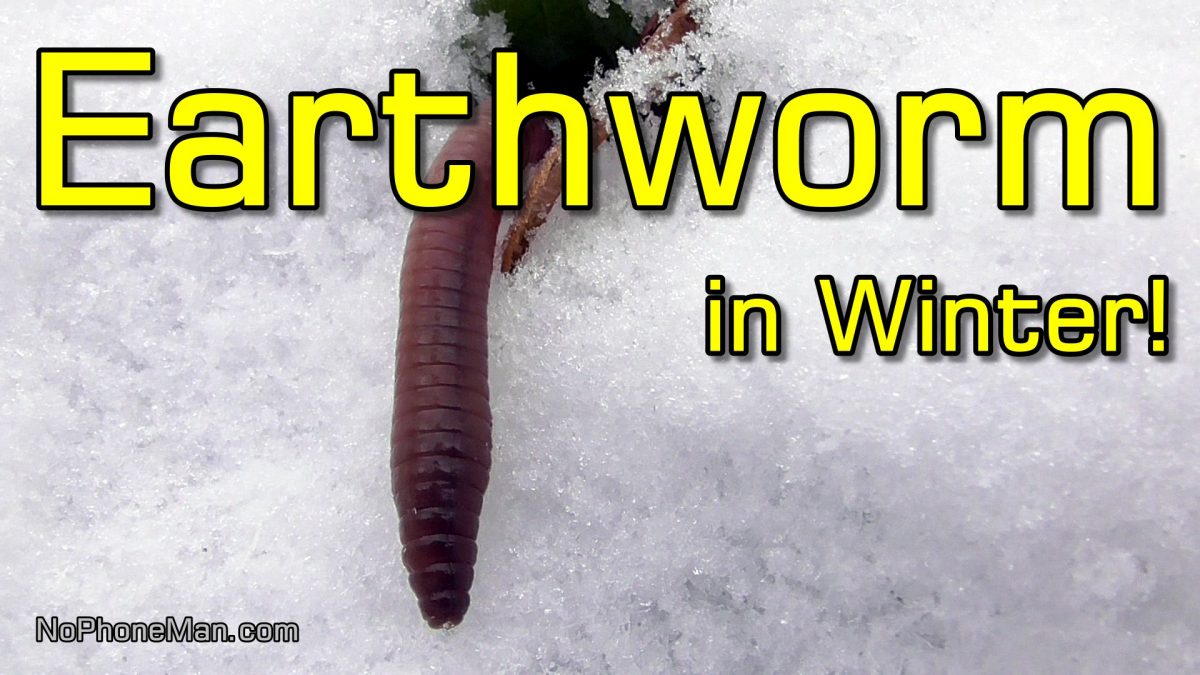
I take daily strolls through the woods, winter or not, – that one is obvious – and on a recent walk in -12 Degrees Celsius freeze, with the entire environment blanketed by snow, I spotted an unlikely creature to encounter this time of year. An earthworm was up on the freezing snow, very well alive and moving, seemingly trying to crawl into a gap in the snow to get under it.
The worm, presumably a cold blooded creature with not much body mass to keep the vital organs functioning when exposed to such sub-zero temperatures, somehow mustered the energy and vitality to avoid freezing up. I don’t know how or why he was on the snow, I just noticed him as I was passing by that it was there so I pulled out the camera and filmed it. However, he was a fairly fat one for a worm.
Granted, the worm was expectedly sluggish, but not frozen solid. Far from it. As I started to film it, wondering which side was its front and which the rear, the worm switched directions and crawled out of the opening in the snow he was trying to get under when I first spotted it, and crawled through its opposite end into a different gap, where it eventually disappeared.
Nature truly is amazing. Never fails to astonish. There should be next to no way for an earthworm to survive when it’s so cold and there’s snow everywhere, yet this one did. And it was able to disappear, and hopefully bury itself deep enough to be safe, before getting eaten.
Now that it’s winter, it’s tough going for the birds who stick around and don’t migrate to the warm climates. For them to come across a protein rich meal in the middle of winter would have been a treat. But somehow, this worm survived his unlikely exposure, dodged the predators and returned back to safety. At lest I hope it did. It is the coldest up on the snow surface. As he made its way deeper in, each centimeter down should only make it easier for it to survive and reemerge when the conditions become favorable for worm survival again.
I certainly wish him all the luck. Hope he learned his lesson and won’t try to stick his bum out of the snow in the middle of winter again.
Earthworm Anatomy
Earthworms, fascinating creatures known for their vital role in soil health, boast a relatively simple yet efficient anatomy. Their tubular bodies are segmented, typically numbering around 100 to 150 segments. Each segment is equipped with tiny bristle-like structures called setae, aiding in locomotion through the soil.
Earthworms lack eyes but are remarkably sensitive to light and vibrations, utilizing photoreceptor cells and touch-sensitive organs to navigate their environment. The mouth, located at the anterior end, is surrounded by a muscular upper lip, known as the prostomium, and the lower lip.
As true soil engineers, earthworms consume organic matter, breaking it down with the help of a muscular gizzard that grinds food before digestion in the intestine. A prominent blood vessel, the dorsal blood vessel, runs along the back, facilitating the circulation of hemolymph, their blood equivalent.
Earthworms play a crucial role in nutrient cycling and soil aeration, making their anatomy a testament to their remarkable adaptation for life beneath the surface.
Earthworm Phylum
Earthworms belong to the phylum Annelida, a diverse group of segmented worms. Annelids, which means “ringed” or “segmented,” are characterized by their bodies divided into distinct repeated units or segments.
Within the Annelida phylum, earthworms fall under the class Clitellata, which includes not only the familiar earthworms but also leeches.
Earthworms showcase the quintessential annelid body plan with their numerous segments, each housing specific anatomical features. The segmentation is not only external but is reflected internally, with repeated organ systems in each segment.
This phylum’s members exhibit a remarkable range of ecological adaptations, occupying various habitats from aquatic environments to terrestrial soils. The success of earthworms within the Annelida phylum lies in their ability to thrive in diverse ecosystems, contributing significantly to soil health and nutrient cycling.
Earthworm Lifespan
The lifespan of an earthworm varies depending on species, environmental factors, and local conditions. Generally, earthworms have relatively short lifespans compared to some other organisms.
Most common garden-variety earthworms live for about one to two years. However, certain species can live longer, with some reports suggesting lifespans of up to six or seven years.
The lifespan of an earthworm is influenced by factors such as predation, environmental conditions, and reproductive maturity. Earthworms reproduce prolifically, and their ability to regenerate lost segments contributes to their resilience.
As they age, earthworms may experience a decline in reproductive capacity, and their overall health can be influenced by factors like soil quality and availability of food. While their individual lifespans might be relatively short, earthworms play a crucial role in soil ecosystems, contributing to nutrient cycling and soil structure throughout their lives.
Earthworm Reproduction
Earthworm reproduction is a fascinating process characterized by its unique features. Earthworms are hermaphroditic, meaning each individual possesses both male and female reproductive organs.
During mating, two earthworms align ventral surfaces, and a copulatory exchange occurs where each transfers sperm to the other. This intricate dance involves the extension of the clitellum, a specialized glandular band near the anterior end, which secretes a mucous cocoon. This cocoon slides over the body, picking up eggs from the seminal receptacles, where the exchanged sperm is stored.
Fertilization takes place within the cocoon as it is deposited in the soil. Over time, the cocoon matures and seals itself, creating a protective environment for developing embryos. The young earthworms, or juveniles, eventually emerge from the cocoon, resembling miniature versions of the adults.
This unique reproductive strategy allows earthworms to contribute significantly to soil fertility and population growth in a variety of ecosystems.





